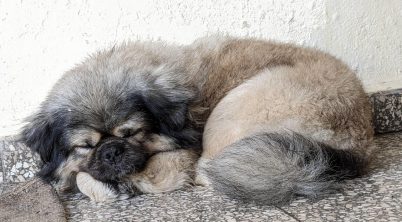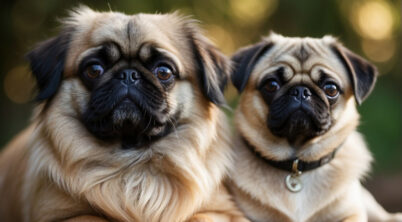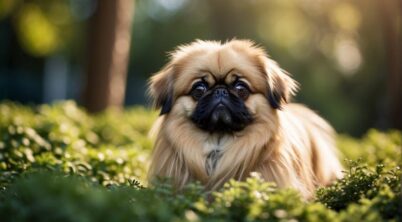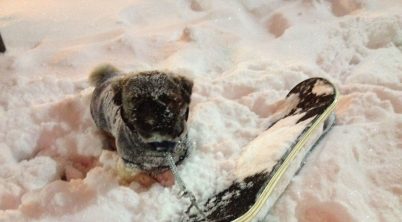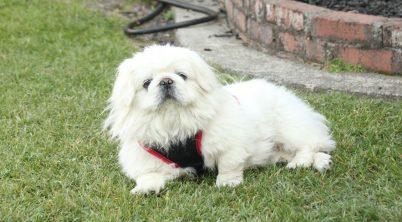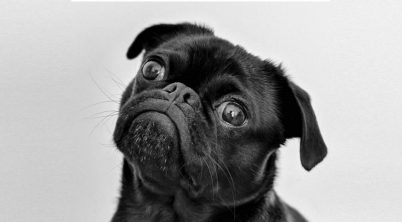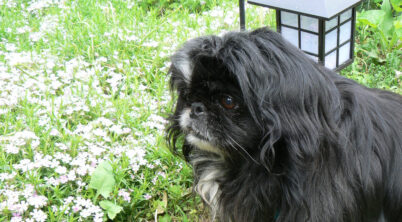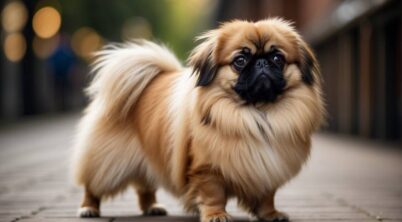The Pekingese, a breed with an illustrious history, is often recognized for its dignified and independent demeanor. Tracing their lineage back to the imperial courts of ancient China, these dogs were once considered sacred and their ownership was restricted to the Chinese aristocracy. Their distinctive physical characteristics, including a flat nose and expressive eyes, bear testimony to the breed’s centuries-old lineage, which has been carefully preserved over time. Today, the Pekingese retains much of its regal bearing but has adapted to a variety of living situations, endearing itself to dog lovers around the world with its unique charm and personality.
Despite their small stature, Pekingese possess a self-important attitude, often described as being lion-like, which is no accident given their historical role as a symbol of the lion in Chinese culture. The breed sports a luxurious double coat that requires regular grooming to maintain its splendor. However, beneath their ornamental appearance lies a sturdy and robust build. A Pekingese’s paws are particularly interesting; they are small and delicate, yet support the breed’s surprisingly solid frame.
Enthusiasts of the breed appreciate the Pekingese for more than their looks; they are affectionate companions who forge strong bonds with their owners. They may display a sense of independence, yet they thrive on attention and interaction with their human families. While they are not overly demanding in terms of exercise, their physical and emotional needs must be met to keep them content. Ideal for those seeking a small but confident companion, the Pekingese continues to be a popular choice for many dog lovers.
Pekingese Paws
The Pekingese breed has several distinctive physical features, with their paws being a notable characteristic. Described briefly, a Pekingese’s paws are:
- Compact: Their feet are relatively small with a firm and stout appearance.
- Flat-Footed: They tend to have a flat-footed stance, with the breadth of the front feet contributing to their rolling gait.
Paw Care:
- Nail Trimming: Regular trimming is essential as overgrown nails can cause discomfort.
- Fur Maintenance: The area between paw pads must be kept free of excessive fur to prevent matting and accumulation of debris.
Sensitivity: Pekingese paws are sensitive and require routine checks to ensure they remain free from injury or irritation. Vigilance against common conditions such as interdigital cysts or infections is important for their overall paw health.
Exercise Needs: While exercise is vital for their health, owners should be aware of the impact of different terrains on their Pekingese’s paws, as rough surfaces can be harsh on their small feet.
In summary, the care of Pekingese paws is crucial for these dogs to maintain their mobility and comfort. Regular grooming, coupled with attentive care, ensures the well-being of their distinctive paws.
Physical Characteristics
The Pekingese is a small dog with distinctive physical characteristics known for its lion-like appearance and lavish coat. They exhibit a stocky and muscular build within their petite frame.
Appearance
The Pekingese sports a compact body with a stocky build that conveys a surprising sturdiness for its size. They display a noticeably flat face, characteristic of brachycephalic breeds, with a short muzzle. It stands 6 to 9 inches tall at the shoulder, presenting a low to the ground silhouette. Their weight ranges from 8 to 14 pounds, with any dog exceeding the latter potentially facing disqualification in show conformation. The breed also features heart-shaped ears that frame its broad, slightly rounded head.
Coat and Colors
The coat of a Pekingese is one of its most defining features, being long, dense, and profuse. It requires regular grooming to maintain its health and appearance. They come in various colors, including solid shades such as fawn, black, cream, and white, amongst others. Their lavish double coat consists of a softer undercoat and a longer outer coat that can often give the impression of a mane, which adds to their regal and lion-like dignity.
Health and Care
Pekingese are known for their distinctive physical attributes and require specific care to maintain their health. This section examines critical health concerns and grooming requirements inherent to the breed, ensuring owners are well-equipped to support their Pekingese’s well-being.
Health Concerns
The Pekingese breed often faces several health challenges due to their brachycephalic (flat-faced) nature. These include:
- Brachycephalic Syndrome: This condition can cause breathing difficulties, and owners should be aware of the signs of respiratory distress. Avoiding excessive heat and monitoring during exercise are crucial as they can exacerbate the issue.
- Eye Conditions: Their prominent eyes are prone to various issues like ulcers and infections. Regular checks can prevent complications.
- Patellar Luxation: A common joint problem where the kneecap slips out of place, which can lead to lameness if not addressed.
- Separation Anxiety: Pekingese may develop anxiety when left alone for long periods, necessitating mental stimulation and companionship.
| Condition | Description | Management Strategies |
|---|---|---|
| Brachycephalic Syndrome | Difficulty breathing due to short snout | Limit exercise in heat, provide well-ventilated spaces |
| Eye Conditions | Risk of ulcers, infections | Regular cleaning, vet check-ups |
| Patellar Luxation | Kneecap dislocation | Weight management, appropriate exercise |
| Separation Anxiety | Stress when alone | Companion or toys for engagement |
Owners must keep a close eye for any signs of distress and consult with a veterinarian for a tailored health plan.
Grooming Needs
Grooming is essential in maintaining a Pekingese’s coat and overall health.
- Coat Care: Their coat is long and dense, with a coarse outer layer and a soft undercoat. Regular brushing minimizes shedding and prevents matting.
- Trimming: Occasional trimming, especially around the pads and hygiene areas, keeps the coat manageable and clean.
- Bathing: Bathing should be done occasionally, ensuring the coat is thoroughly dried afterwards to prevent skin infections.
| Grooming Activity | Frequency | Notes |
|---|---|---|
| Brushing | At least weekly | Essential to prevent mats and control shedding |
| Trimming | As needed | Focus on hygiene areas and paw pads |
| Bathing | Monthly or as needed | Dry thoroughly to avoid infections |
In terms of exercise, short daily walks suffice as they have relatively low exercise needs but should be kept cool to prevent overheating due to their susceptibility to heat.

